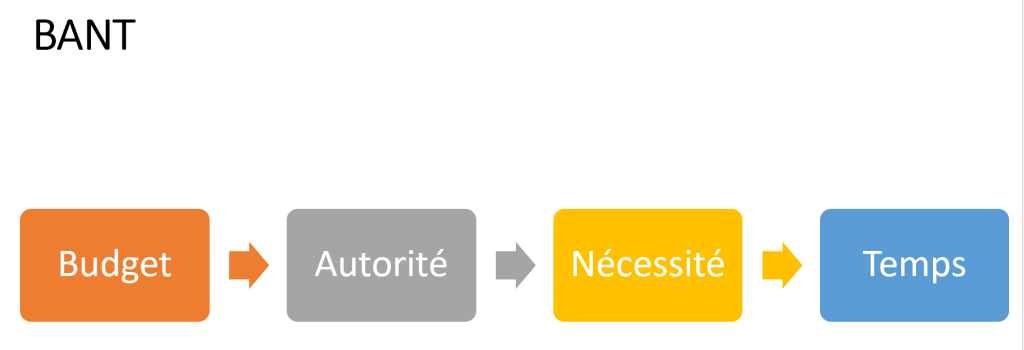BANT – sales techniques
BANT is a sales technique that involves filtering customers by interest rather than selling. It’s therefore a good idea to use a complementary technique such as SPIN or SOS. The BANT technique Benefits Disadvantages How to apply the BANT technique The BANT method uses questions during discovery, but some questions can be tricky, so you […]
BANT is a sales technique that involves filtering customers by interest rather than selling. It’s therefore a good idea to use a complementary technique such as SPIN or SOS.
The BANT technique

- Budget: does the customer have the financial means to make the purchase? If the customer doesn’t have the budget, find a cheaper solution or stop the sales process altogether.
- Authority: does it have the power to decide and buy? If not, you’ll have to ask who the decision-maker is, or you won’t be able to go ahead with the sale.
- Necessity: how much does he need the product? The greater the need, the greater the chances of selling, the lesser the need, the greater the risk of wasting time.
- Time: how long and what steps do you need to take before buying? If the buying process takes too long, it may be better not to invest more in a sale that takes too long to be profitable.
Benefits
- This technique is ideal for companies with a high-demand product, allowing them to focus on the easiest and highest-paying customers quickly.
- Efficient for in-store sales to eliminate time wasted with the curious or those who can’t afford to buy
- It’s also a technique for selecting the best customers for incoming telephone calls.
Disadvantages
- This technique pays off for commission-based salespeople, but can be detrimental to a company that wants to sell to everyone.
- This selection technique can frustrate some customers, who will turn to the competition.
How to apply the BANT technique
The BANT method uses questions during discovery, but some questions can be tricky, so you can choose to ask directly or in a roundabout way.
- Budget: what’s your budget? How much money do you have available? Which of these products fits your budget? Will you be using credit?
- Authority: who decides? More subtly: Who is involved in your decision-making process? Who is concerned by this purchase? If I convince you that this product is perfect for you, can you buy it right away? Who do you need to talk to to complete the purchase?
- Necessity: what happens if you don’t buy this product? What’s your priority for this year? How does this purchase fit in with your strategy?
- Time: what is your purchasing process? If you’re convinced, can you buy right away?
How to improve BANT
The BANT questions correspond to those of the customer’s situation in the SOS technique, but you’re missing the customer’s objective if you want to convince him or her. Ideally, therefore, you should integrate the BANT into the SOS, so you have a technique that you can use both to filter customers and to convince them if you decide to continue the sales process.
Jean-Pierre Mercier
